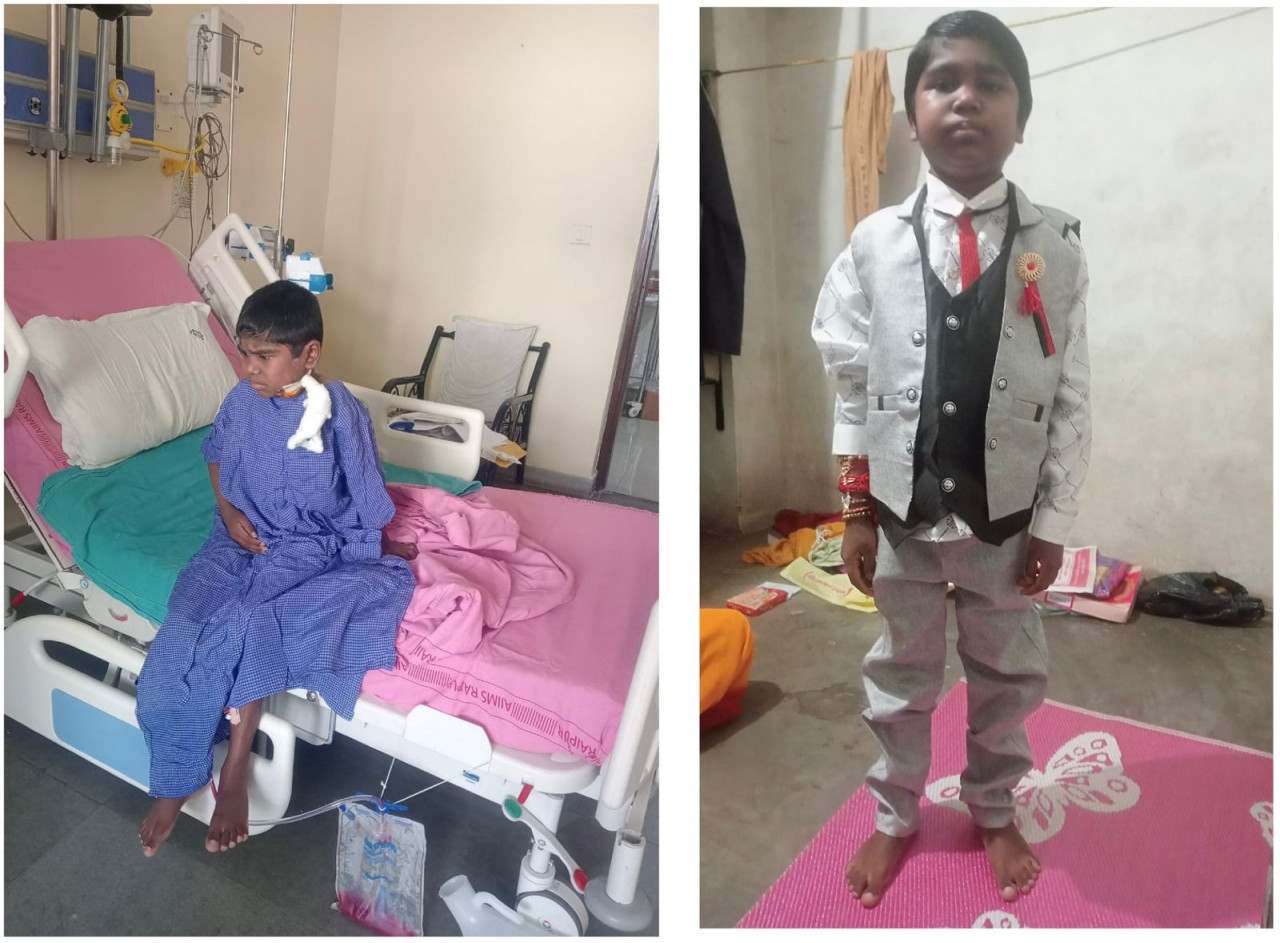
6th Assembly of International Solar Alliance Assembly decides to increase Viability Gap Funding Cap for solar projects from 10% up to 35% of project cost
ISA-funded Projects bring solar energy to Malawi Parliament and projects in Fiji, Seychelles and Kiribati
“ISA will share India’s successful practices with developing countries; with right policy and regulatory framework, certain that investments will flow into Africa”: ISA President and Union Power and New & Renewable Energy Minister R. K. Singh
“Climate action and energy transition will not happen unless we solve the problem of energy access”: Union Power and New & Renewable Energy Minister R. K. Singh
The Sixth Assembly of the International Solar Alliance (ISA) was hosted at Bharat Mandapam, in New Delhi today, October 31, 2023 and was presided over by the Union Minister for Power and New & Renewable Energy, Government of India, Shri R. K. Singh in his capacity as the President of the ISA Assembly. Ministers from 20 countries and delegates from across 116 Member and Signatory countries participated in the Assembly.
“Renewable energy sources can decarbonise 90 percent of the power sector by 2050”
Addressing the Assembly, the ISA President and Union Minister said that the International Solar Alliance is steadfast in its commitment to Member Countries to make solar as the energy source of choice. “Around 80 percent of the global population, totaling a staggering 6 billion people, reside in countries that depend on fossil fuel imports. Renewable energy sources have the potential to supply 65 percent of the world’s total electricity by 2030 and decarbonise 90 percent of the power sector by 2050. The International Solar Alliance is steadfast in its commitment to Member Countries to make solar as the energy source of choice, foster environments conducive to attracting investments and ensure ample energy availability to meet the surging global demands.”
“VGF Cap for Solar Projects in Developing Countries now up to 35%, up from 10% of project cost”
Addressing a joint press conference along with Ministers of member countries, Shri Singh informed that the 6th Assembly of ISA has decided to increase viability gap funding for projects from 10% up to 35%. “The ISA has a programme for VGF so that viability gap funding is available for projects in developing countries.” The grant provided under the mechanism is USD 150,000 or 10% of the project cost (whichever is lower), per country per project. “Today, we decided that we will increase the viability gap funding to be in the range of 10% to 35% of the project cost, depending on the capacity and needs of the countries and their respective projects. This will enable more investments to flow into Africa.”
ISA-funded Projects bring solar energy to Malawi Parliament and projects in Fiji, Seychelles and Kiribati
Four projects set up with ISA’s assistance were inaugurated by the Union Power and New & Renewable Energy Minister at the ISA Assembly today.
These projects are:
- Solarisation of the parliament building of the Republic of Malawi
- Solarisation of two rural health care centres in the Republic of Fiji, with an 8-kW solar PV system and 20-kWh battery storage capacity for each health centre
- Installation of 1 solar powered cold storage of capacity 5 MT for the benefit of agricultural stakeholders at La Digue Island, Republic of Seychelles
- Solarisation of the Nawai Junior Secondary school (JSS) in the Republic of Kiribati, with a 7 kW Solar PV rooftop system paired with a 24-kWh BSS
Dedicating the projects, the ISA President applauded the efforts of ISA member countries in advancing the cause of energy transition through solar energy.
“ISA has been delivering results, training centres set up across Africa”
Shri Singh cited capacity building initiatives of the ISA, informing the media that the organization has been delivering results. “The organization has been providing expertise, handholding and training support. Training centres have been set up across Africa.” The projects are a part of ISA’s initiative to launch Demonstration Projects in May 2020, to meet the needs of Least developed countries (LDCs) and Small Island Developing States (SIDS). The aim has been to exhibit solar technology applications which can be scaled up, and build the capacity of beneficiary member countries.
“ISA a force for good, helping the world in twin goals of energy transition and energy access”
The Union Minister said that the International Solar Alliance has emerged as a force for good in the world, in its pursuit of the twin goals of helping energy transition and energy access. “The ISA is one of the most critical organizations as the world takes on the challenge of global warming. We today have 116 member countries, and many others who have signed the ISA Framework Agreement and are going to ratify it soon.” Noting that the ISA is a large organization, the Minister added that it has a lot of partner organizations as well.
“Solar is the Best”
The Minister explained why the organization has a salience in the world of today and tomorrow. “The ISA has a salience since there are about 733 million people in the world who do not have access to electricity. We at ISA believe it is our mission to provide energy access to these people using renewable energy sources. And out of renewable energy sources, solar is the best, since it is available for a longer period of time, both in terms of seasons and hours per day.”
“ISA will share India’s successful practices with developing countries; with right framework, certain that investments will flow into Africa”
The ISA President also informed that the Assembly discussed how successful energy access and energy transition practices adopted by India can be replicated in developing countries. “With public investment alone, we cannot ensure universal access to electricity. We need to de-risk investment so that private investment can come. Hence today, we also discussed how we can replicate what we have done in India in other countries, in terms of the techno-regulatory framework, dispute settlement mechanisms and payment security mechanisms, so that private investments can come in. For this, ISA has set up a fund, which has components for insurance and payment security mechanism. With these mechanisms, we are certain that investments will start flowing into Africa, especially those countries which have problems of energy access to all their people.”
“Expecting developed countries to provide green funds as per their COP21 commitments”
The Minister underlined the importance of provision of green funds by developed countries as per their COP21 commitments. “We also expect that green finance to become available with the funds we are setting up. As the green funds start flowing as per the commitments made by developed countries at COP21, we will have renewable energy projects being rolled out at scale throughout those countries where there is problem of energy access.”
“Energy access first and then energy transition, or energy access using green energy”
The Minister that we can’t have development without energy access. “The ISA has been formed to make it possible. We believe that climate action is just not going to happen until and unless we solve the problem of energy access. We can’t have energy transition until we solve the problem of energy access. Access first and then transition, or access using green energy – that is our philosophy. This is the problem which ISA is there to address.”
“Solar revolution must be backed up by a broader strategy of access to energy”
The Co-President of the Assembly, H.E. Ms Chrysoula Zacharopoulou, France’s Minister of State for Development, Francophonie and International Partnerships said: “For France, the ISA is a key initiative to promote the development of clean energy and thus combat climate disruptions. It is playing its full part in this great project, with constant and growing support for our Alliance. Through the French Development Agency (AFD), we’ve financed over 1.5 billion euros worth of solar projects since 2016. Last year, we provided over 7.5 billion euros in climate finance to our partners. ”
“Need to accelerate build-up of solar energy, especially in developing countries”
Director General of International Solar Alliance, Dr Ajay Mathur said: “We urgently need to accelerate the build-up of solar energy, especially in developing countries and in applications that influence the daily lives of those without access to reliable energy – such as getting electricity from solar mini-grids, powering agricultural pumps and running cold storages. Capacity building and regulatory change are necessary enablers towards that. ISA is facilitating over 9.5 GW of solar applications in 55 developing countries, including LDCs and SIDS, and have already provided training to nearly 4000 people across the developing world on ways to make a living out of supporting solar energy. We are working on developing STAR Centres in countries which will be a hub of technology, knowledge, and expertise on solar energy. In addition, ISA is enabling solar mini grids to provide universal energy access, especially where grid extension is too expensive. Guarantees help in crowding-in private sector investment, and ISA has developed such a mechanism to provide guarantees through its Global Solar Facility to its member countries in Africa. We are also enabling entrepreneurs in these countries who can, with help, become major suppliers of solar energy across countries and regions.”
The Assembly is the apex decision-making body of ISA, in which each Member Country is represented. This body makes decisions concerning the implementation of the ISA’s Framework Agreement and coordinated actions to be taken to achieve its objective. The Assembly meets annually at the ministerial level at the ISA’s seat. It assesses the aggregate effect of the programmes and other activities in terms of deployment of solar energy, performance, reliability, cost, and scale of finance. The Sixth Assembly of the ISA is deliberating on the key initiatives of ISA on three critical issues energy access, energy security, and energy transition.






